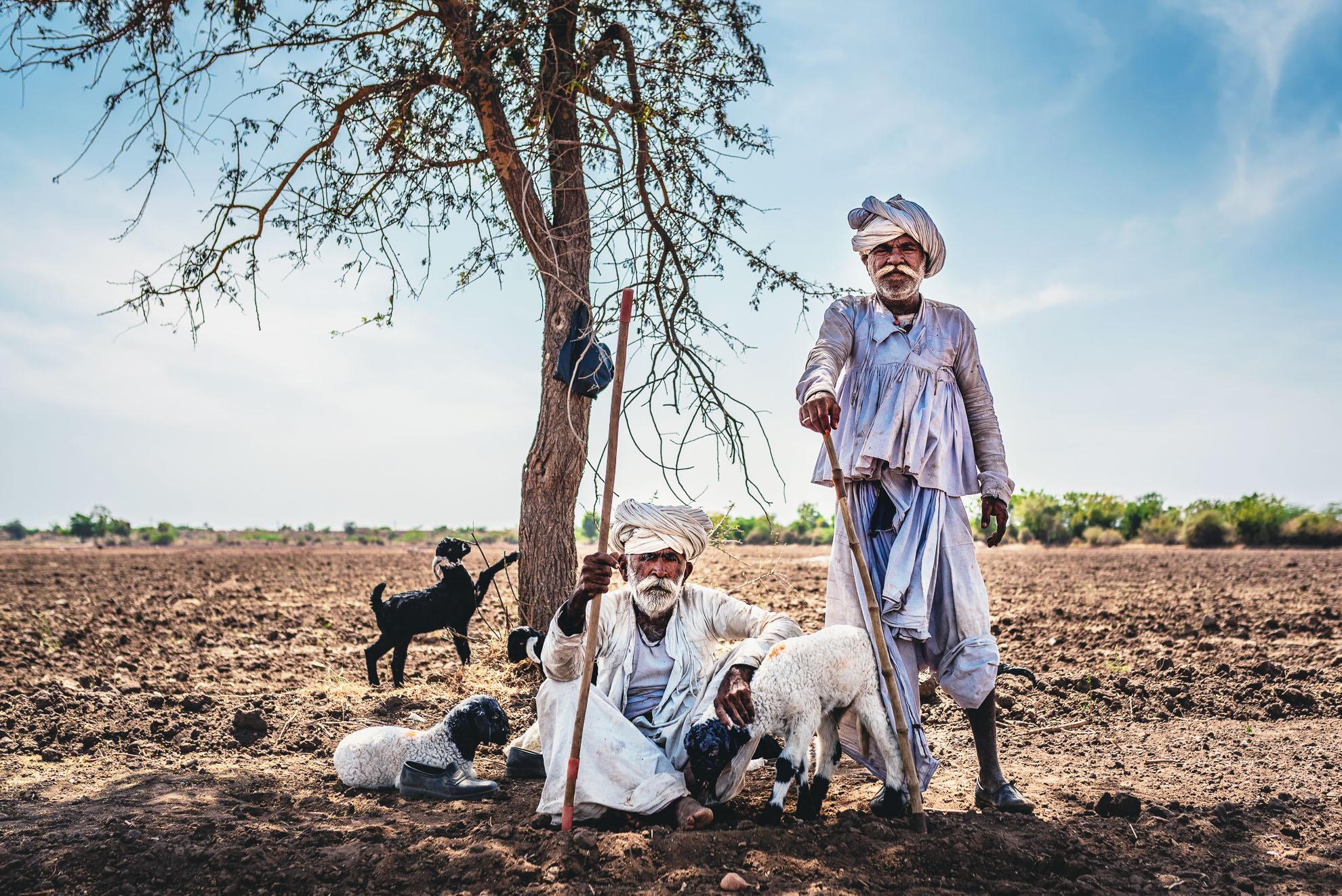RABARI TRIBE
Rabari tribes are semi-nomadic groups that move between Gujarat and Rajasthan with their cattle. During the dry season Rabari tribes move in search of water and vegetation, while they return to their native villages with the arrival of the monsoons. Therefore it is a pastoral community that breeds sheep, goats, camels or buffaloes and lives mainly thanks to the sale of milk and butter. Rabari are sweet, smiling and hospitable people, with whom I spent wonderful days. I first met Irabel and Sartan in an uncultivated field, in the shadow of a thin tree with their lambs.
They were smoking and chatting, while waiting for their women: they were guarding this field for the settlement of a new camp with the rest of the community, made up of four different families. They wore white cotton dresses with the classic white turbans and they didn’t seem restless or bothered by the heat, which instead seemed excessive to me. After an hour the camels of the caravan appeared on the horizon, with women and children. Hence, with impressive speed, they put down all their belongings from the camels: each family had a litter on which their belongings, called UTARU, were arranged and covered with blankets to protect them from sun and dust. While women and men organized the new camp, children and lambs took shelter under the litters. Instead the boys of the group were grazing goats and camels all day long.
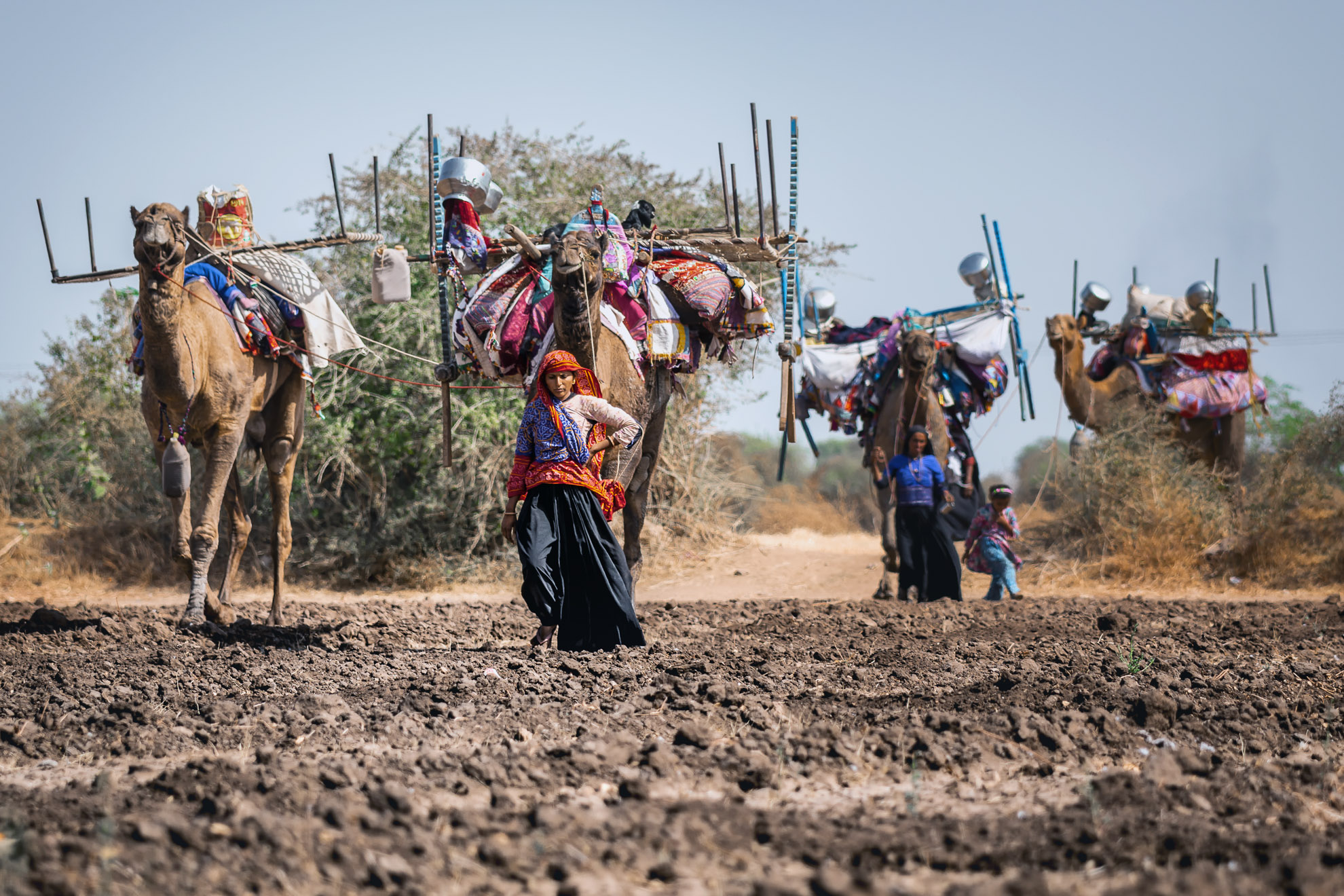
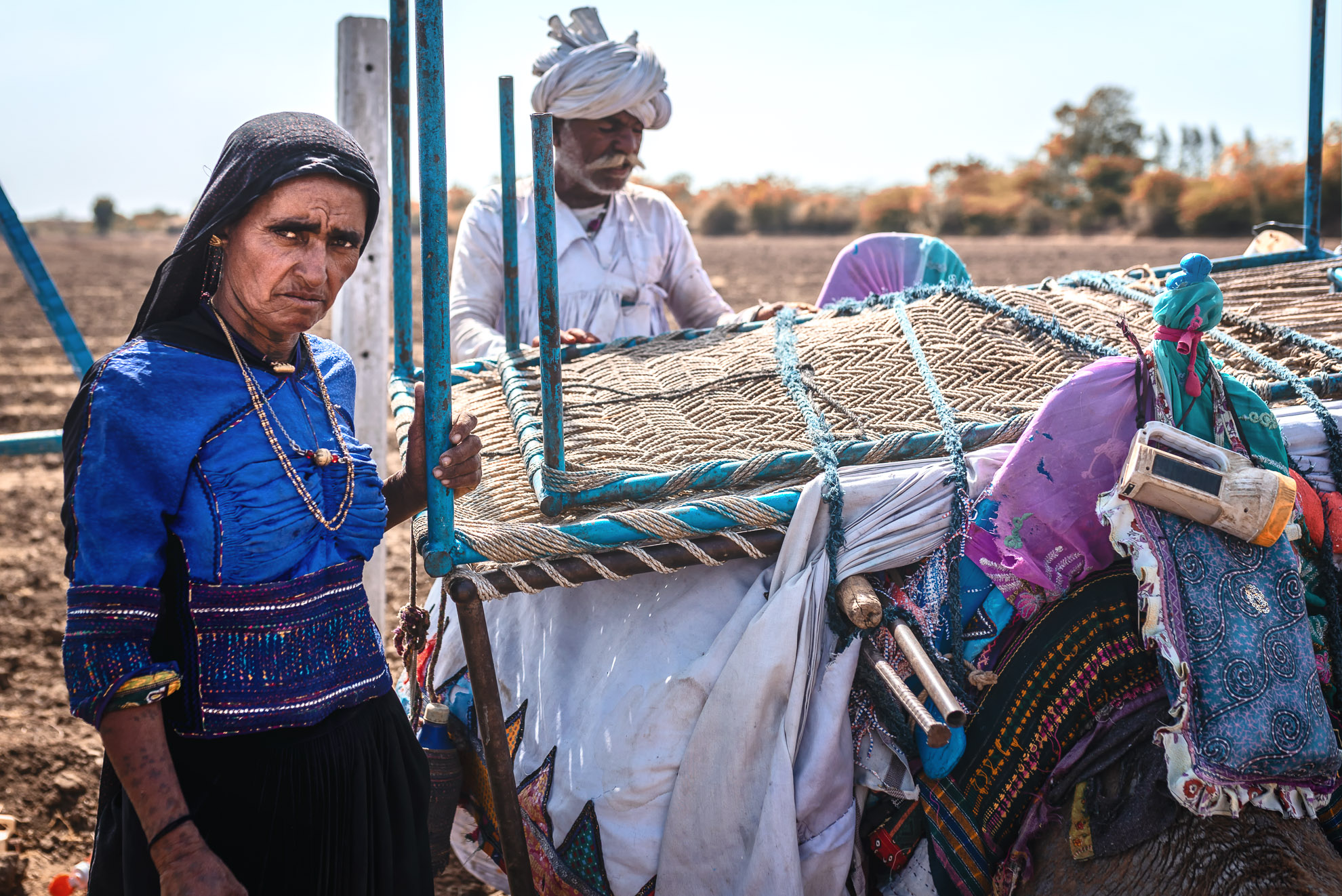

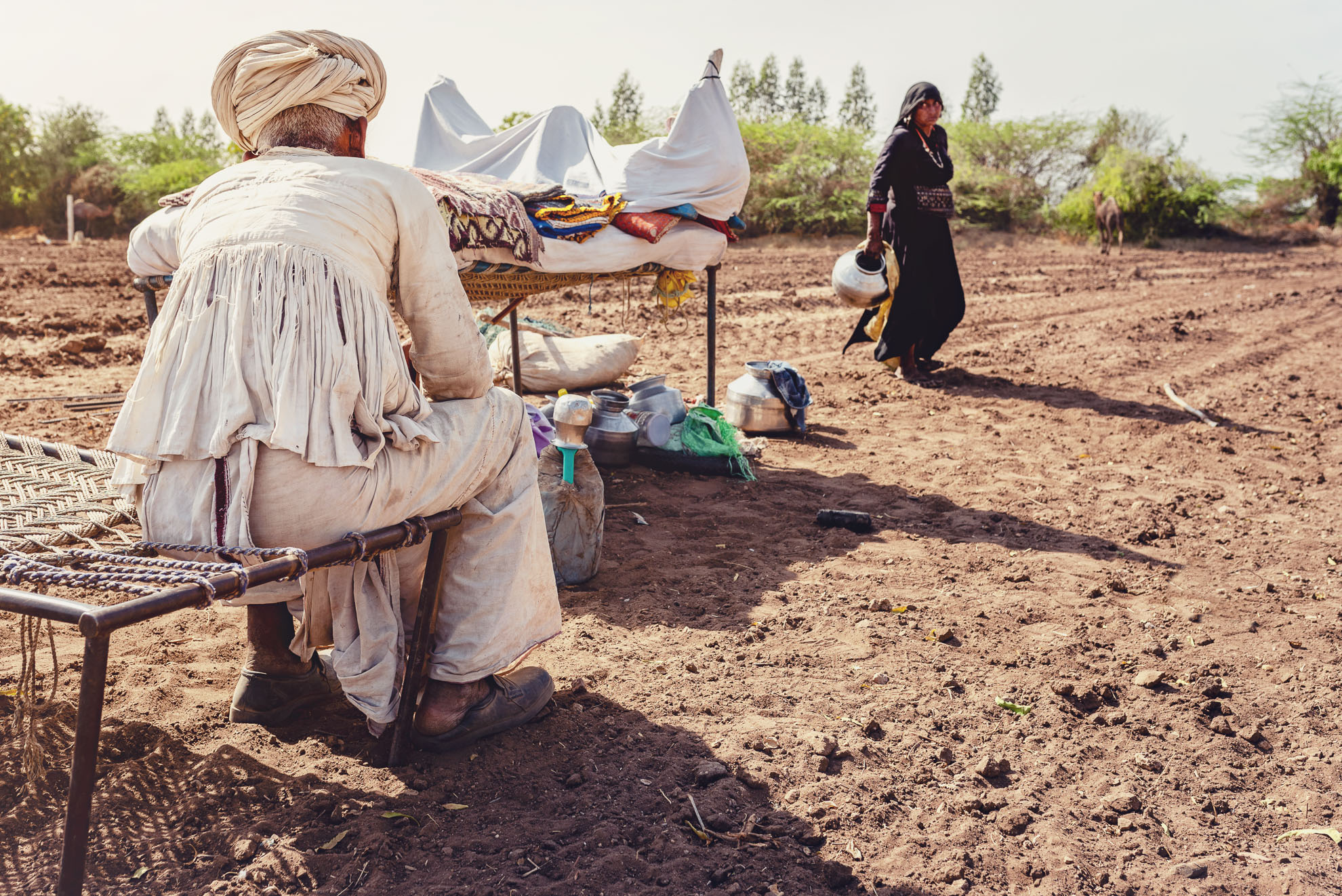
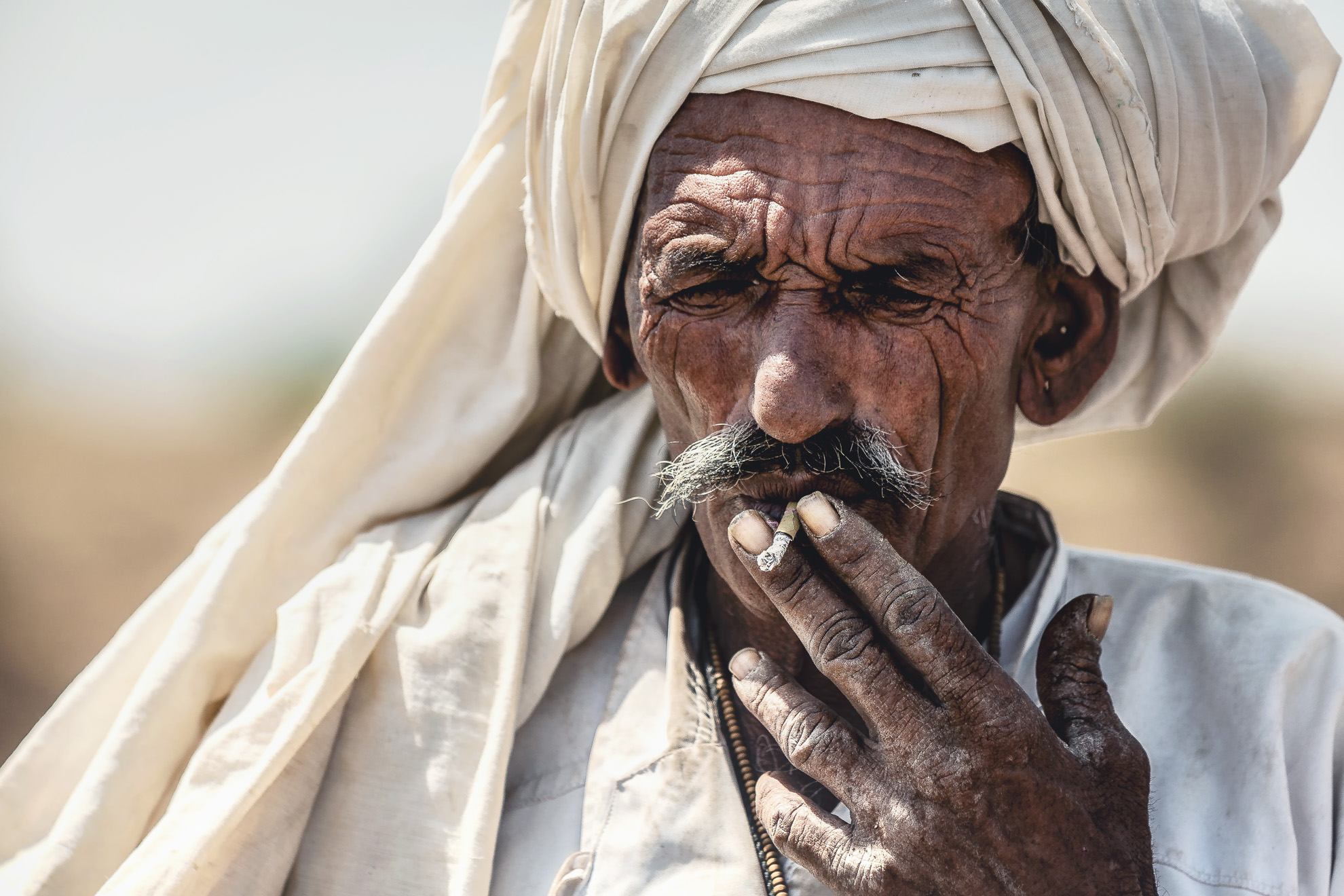
Then I decided to follow Sartan to control the livestock and once we found the camels I had to work very hard to convince Sartan that I could not drink freshly milked camel milk! I don’t think I was very convincing because Sartan went anyway to milk a camel, and for this reason I noticed that females had harnesses around the breasts to prevent the puppies from taking milk at will during the day. Suddenly a man came to the field and started screaming, in Gujarati..and after a passionate Indian dispute, Sartan and his boys moved goats and camels to another camp. I later understood that the (uncultivated) field where they were previously grazing was a private property, whose owner didn’t want to give it to Rabari tribes. Finally, in the evening, I said goodbye to Sartan and his Rabari tribe: it was sad, but I had to continue my journey along the Kutch desert.
I met several rabari communities in the following days and all of them were very friendly. In particular, I found a large camp in the Kutch where men had red turbans and buffaloes. It was full of children who literally kidnapped me to go with them to play and take pictures. I was really excited by their brightness and curiosity! Women, on the other hand, were busy in their housework, and offered me the inevitable chai and the typical Gujarati sweet based on flour, milk and sugar (mohanthal).
